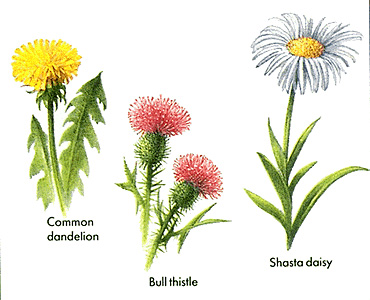Composite, << kuhm POZ iht, >> family is the common name for a large family of flowering plants. The scientific name for this family is Asteraceae or Compositae. The family consists of more than 20,000 species of herbs and shrubs. These plants are found throughout the world and in most climates and habitats. The composite family includes such familiar plants as asters, daisies, goldenrods, lettuce, ragweeds, sagebrush, thistles, and zinnias.
In plants of the composite family, each flower head is a composite of many small flowers surrounded by a cuplike cluster of modified leaves called bracts. From a distance, the flower head resembles a single large flower. A daisy, for example, has an outer ring of long, white ray flowers that look like individual petals, and a yellow center of many tightly packed, tube-shaped disk flowers. A thistle head has only disk flowers, and all the flowers of a dandelion head are raylike.

Some plants of the composite family, including endive, chicory, lettuce, and artichoke, are used as food by human beings. The seeds of sunflowers and safflowers are important sources of vegetable oils. Calendula, camomile, wormwood, tansy, and arnica are used to make drugs. Chrysanthemums, asters, dahlias, and many others are grown for their beauty.
